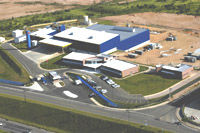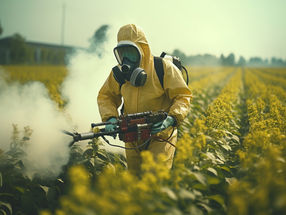Cadmium in food
BfR brochure uses the example of the heavy metal to demonstrate how a risk is assessed
Advertisement
In its new brochure "cadmium in food - A recent assessment of the population’s intake", the Federal Institute for Risk Assessment (BfR) uses the example of the heavy metal to demonstrate how food risks are assessed scientifically. Cadmium occurs naturally in the soil but is also introduced into the environment by man. Via air, water and soil the heavy metal can migrate to food. The brochure explains in a clear manner how BfR takes into account various groups in the population and their eating habits in its assessment of the health risk. The brochure was financed by the Federal Ministry for the Environment, Nature Conservation and Nuclear Safety (BMU) and is available free-of-charge from the BfR press office.
Cadmium is a heavy metal that occurs ubiquitously in the environment. From soil cadmium spreads to plants that are processed into food and feed. Consumers mainly ingest cadmium from food. After intake cadmium accumulates in the body. Persistently high cadmium intake can lead to kidney and bone damage.
The brochure takes up questions like how cadmium in the environment reaches food, which groups in the population ingest what amounts, how exposure to cadmium in the environment and food can be reduced. It draws on examples to explain this in simple terms.
The examples are based on the latest figures. For the risk assessment of cadmium in food, BfR used the data of the National Food Consumption Study II of the Max Rubner Institute (MRI). In conjunction with this study around 20,000 persons aged between 14 and 80 were interviewed about their food consumption between November 2005 and January 2007.
The brochure outlines the individual steps of scientific risk assessment. As the example of cadmium can be applied to the assessment of other food risks too, it contains background information for everyone who deals with risk assessment issues in the food sector. It is available in german language free-of-charge from the BfR.
Most read news
Other news from the department politics & laws

Get the chemical industry in your inbox
By submitting this form you agree that LUMITOS AG will send you the newsletter(s) selected above by email. Your data will not be passed on to third parties. Your data will be stored and processed in accordance with our data protection regulations. LUMITOS may contact you by email for the purpose of advertising or market and opinion surveys. You can revoke your consent at any time without giving reasons to LUMITOS AG, Ernst-Augustin-Str. 2, 12489 Berlin, Germany or by e-mail at revoke@lumitos.com with effect for the future. In addition, each email contains a link to unsubscribe from the corresponding newsletter.
































































